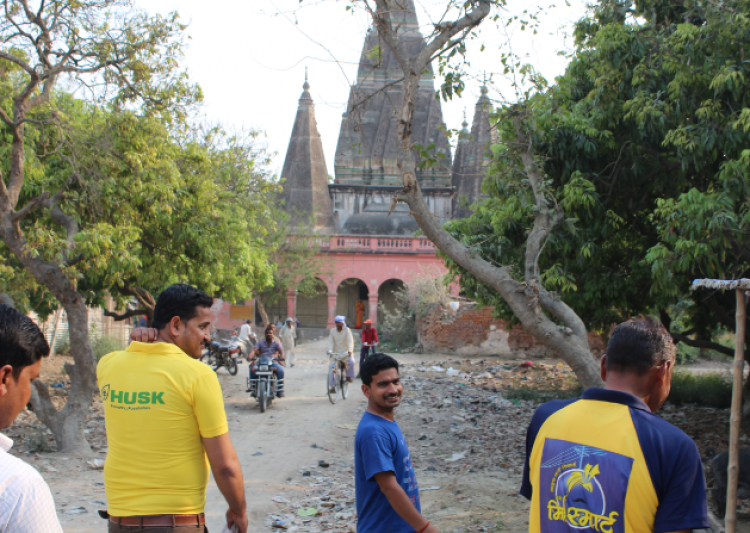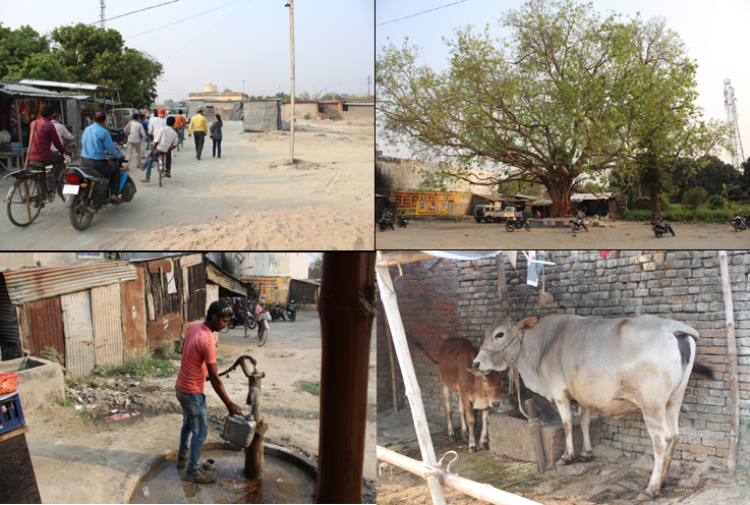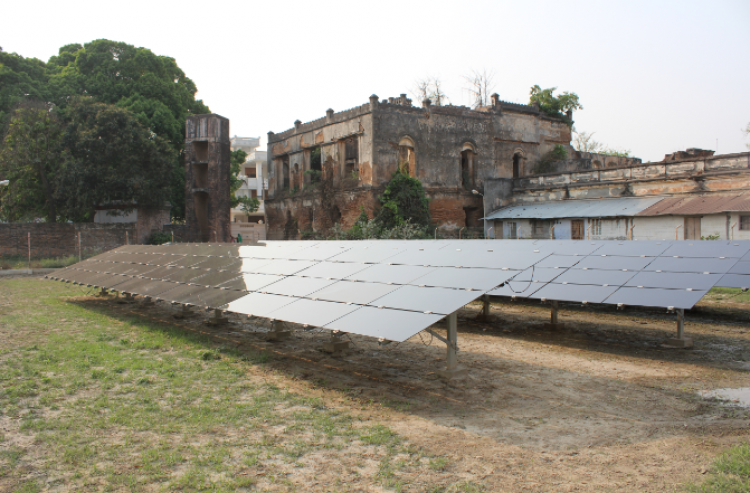In April of this year, the Indian Prime Minister, Narendra Modi, drew scorn when he announced that every village across India had access to electricity. The reality that ‘electrification’ in government terminology meant that a mere 10% of households in any one village had power, was not made clear in the initial announcements.
What Modi lacked in specifics in April, his government has not lacked in ambition. During the final implementation of ‘DDUGJY’, a scheme to connect every village to the grid, he launched the ‘Saubhagya Yojna’ programme in September 2017, aiming to achieve complete household electrification by installing solar energy, battery storage, LED lighting, a fan and a plug socket in every willing house, whether urban or rural by December 2018. This would concentrate on the 30 million below poverty line households not covered by other ongoing electrification schemes.
Enjoy 12 months of exclusive analysis
- Regular insight and analysis of the industry’s biggest developments
- In-depth interviews with the industry’s leading figures
- Annual digital subscription to the PV Tech Power journal
- Discounts on Solar Media’s portfolio of events, in-person and virtual
However, it is also important to remember that power connections in India do not guarantee regular and reliable electricity. Indeed this aspect is often overlooked in the mainstream, overshadowed by the sheer number of people still left in the dark.
Uttar Pradesh, the most populous state in India, dominated by agriculture on the plains of the Ganges, and its neighbours Bihar and Jharkhand, have a combined population of 400 million people (at a crude estimate) of which around half have little or no access to electricity.
Nonetheless, even with electricity, a fledgling rural business will always be stifled if it has no power for 6 to 8 hours on any given day, with frequent and unpredictable blackouts. For total electrification to be of most value, it requires a three-pronged attack: First, to bring grid infrastructure to villages; secondly, to connect each individual household; and lastly, to make the power supplied, both reliable and affordable.
Power at the last mile
This is why PV Tech visited a village in the heart of the North Indian plains where Uttar Pradesh borders Bihar, to see how a bold mix of biomass, solar and energy storage technologies is transforming local businesses by providing round-the-clock clean energy at prices cheaper than those of the main grid – all the while helping to solve India’s long struggle with power theft.
Heading east past the town of Kushinagar, a Buddhist pilgrimage site, lies the village of Tamkuhi Raj. The terrain is flat in all directions, with cornfields, brick kilns and a buzz of agricultural activity dictating.
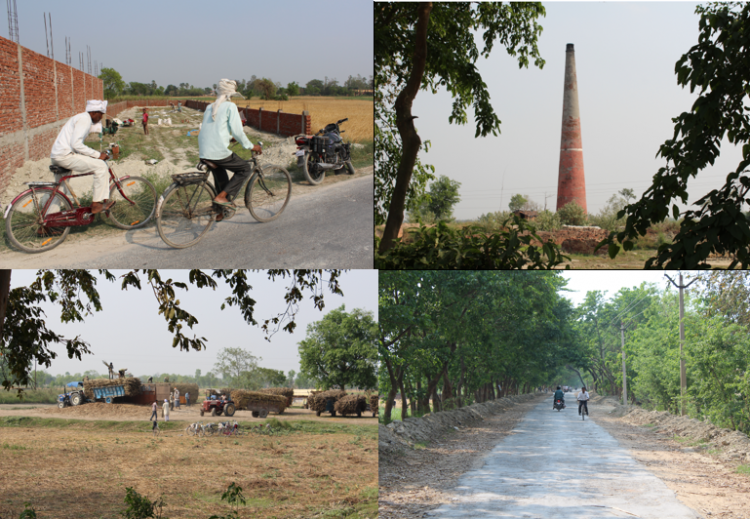
It is here that a hybrid mini-grid has been installed by Husk Power Systems, one company in particular that has seen the value in adding reliable decentralised power systems to locations at the furthest reach of the grid. The Indian firm started out in 2008 by deploying biomass gasification systems, particularly using waste rice husks as a fuel, before branching out into the hybrid space.
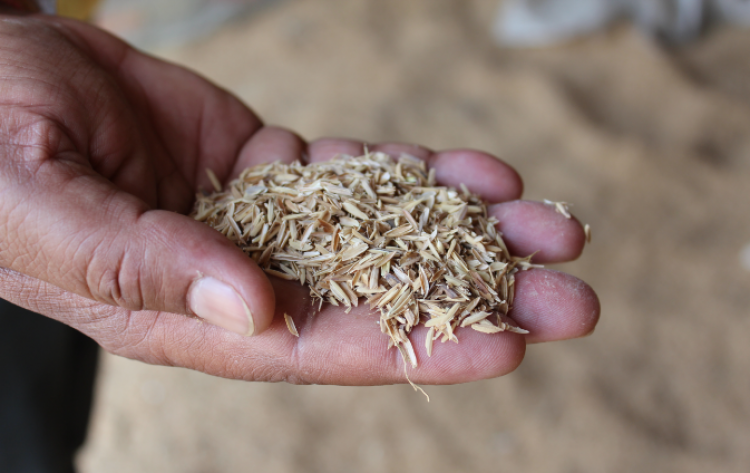
Manoj Sinha, the co-founder and CEO of Husk, has a vision of electrifying his homeland, and though his company is focussed on the northern plains, given the vast number of people with poor quality power access, it is also active in parts of Africa. Sinha, grew up in Uttar Pradesh and experienced a lack of power first hand, so after moving to the US, he returned to India to help improve the situation.
Husk did originally evaluate the potential for solar energy, but that was back when the firm was created in 2008 and PV technology was prohibitively expensive, with prices of around US$5-6 per Watt versus the biomass systems’ cost of US$1.20 per Watt. However, while the rice-husk-fuelled biomass option provided attractive costs, it was limited by maintenance and feedstock requirements. One could technically run it throughout the day, but given the number of moving parts, the systems would come to their end-of-life very quickly.
The complete solution developed when global price points on solar technology followed a dramatic downward curve, making the combination of biomass, solar and energy storage feasible. Husk struck up a strategic partnership with First Solar, the US-based thin-film PV manufacturer and project developer. First Solar’s thin-film technology is particularly suited to India’s humid climate, due to the way the semiconductor used in its modules responds to changes in temperature, humidity in atmosphere and low light quality, delivering 5-9% higher energy yield, it claims. Unlike most market players who use polycrystalline silicon as the semi-conductor, First Solar employs Cadmium-Telluride as the semi-conductor material for its modules. The manufacturing process is very different and the company claims that it uses 98% less semi-conductor material to make the same capacity as compared to the polysilicon technology, with a significantly lower carbon footprint as compared to any other manufacturer.
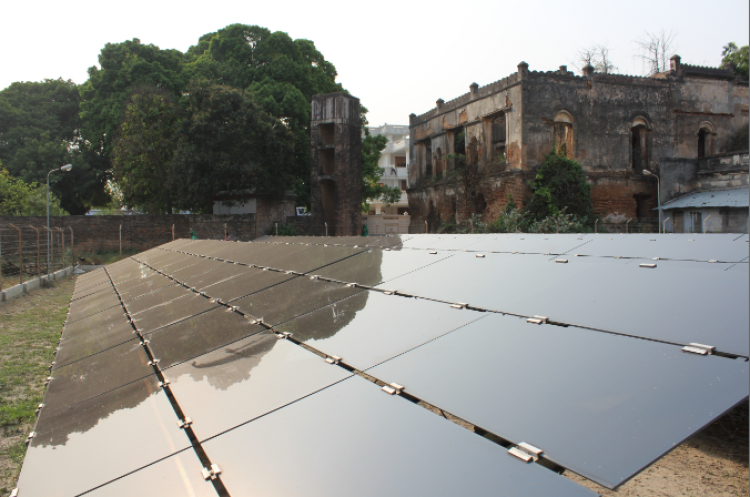
Further explaining why Husk’s mini-grid at Tamkuhi Raj adds value, the local regional manager at Husk, Sanjay Singh, says: “Due to India’s heavily subsidised power industry, some believed that the end consumer, particularly in marginalised India, had little desire to pay for additional, more reliable sources of power. But, when certain businesses are curtailed, and some cannot run at all, or shops can’t be kept operational in the evenings for those local workers who can only shop at night, these people will actually pay for quality power and that’s again based on the data we see.”
Food and power
In the village, solar power provides electricity to the customers during the day, while simultaneously charging the batteries. The batteries are then utilised at night. The biomass gasification system is only used as a backup, if there is poor weather during the day, which does not allow the batteries to sufficiently be charged up. If the load is particularly high, that can also impact the ability of the battery to supply enough power. The biomass system can seamlessly address this through a five-minute transfer via a manual lever. Once the rice husks are fed into the gasification system, it takes 15-20 minutes to combust. Impurities are then removed before progressing into the gasifier. For the system to generate power for an hour, it requires around three bags of rice husk – a fuel source that is in plentiful supply in the region.
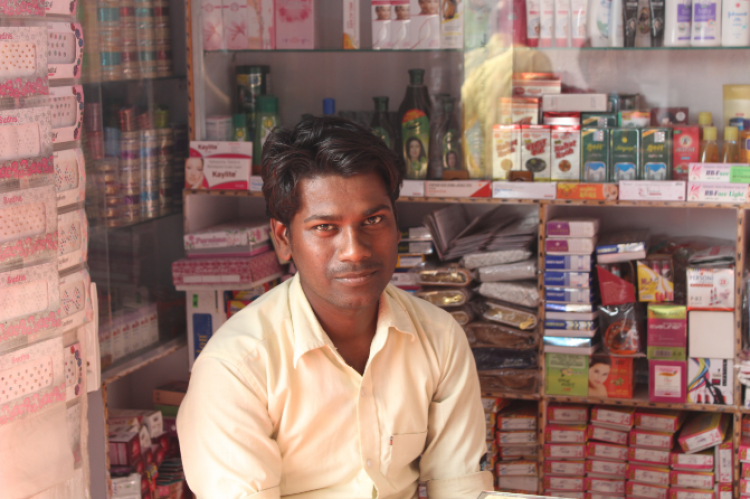
Shopkeeper Dinesh Gupta didn’t even have a shop before the Husk mini-grid system started operating in the village. A reliable source of power allowed him to start selling a range of cosmetics like soaps and creams along with basic clothing items at a nearby market. He uses the power mainly for lighting at night, secure in the knowledge that it can be tapped 24 hours-a-day.

Munna Yadab, who runs a confectionery, has completely cut his power supply from the main grid to get 24/7 supply from Husk. For the first time he can use refrigerators to sell cold drinks and other chilled items that were a struggle during the power cuts of the past. Cumulatively, he is now paying slightly more for this power, but this is because now he can run power round-the-clock, and the additional price is more than offset by the ability to expand the scope of his business.
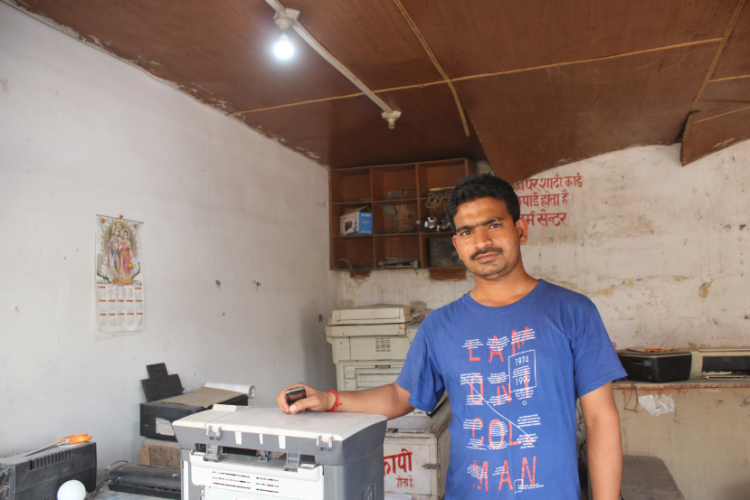
Susant Gupta used to run a printing and copying service shop in town with a diesel generator at a cost of 300-400 rupees per day. Having adopted power from Husk and First Solar’s mini-grid, he can now run the shop at 1,200-1,500 rupees per month with zero power interruption. He’s cut off the main grid supply to only use Husk power and with the confidence of reliable power behind him, he has been able to secure a loan to expand his business.
Gupta says he stood in a line to be one of the first customers to get his power. The local market has benefitted and particularly households that weren’t getting any power previously. The biggest benefit is not having to wait for electricity to come in order to run a business, he adds, as power is now 24/7. In the past if they had no electricity for four hours in the morning, then the shop and others like his just sat idle. Husk also runs a water purification service using power from the mini-grid, which Gupta takes advantage of to purchase unbranded and clean bottled water for his home.
These are just a few stories from the market, but spread across multiple entrepreneurs, businesses and educational facilities, you have significant benefit to the community at large, even if the Husk system for now can only supply power to roughly 110 people in this particular village.
Across their various sites, based on a survey by Husk of over 250 commercial customers, over two thirds were able to increase their revenue by around 200% by getting access to 24/7 power. Even Husk was not expecting such positive results.
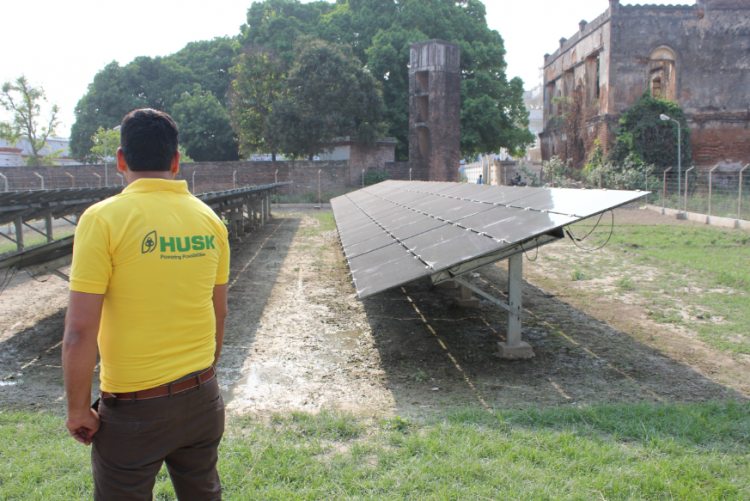
This is partly because the locals no longer have to worry about the reliability of electricity.
“Now they can build a life round something that is omnipresent and always available,” adds Sinha. “They can buy a freezer and they can keep perishable products that they could not before. They can purchase ice cream making machines and make ice cream and other additional products, which is the powerful result of providing 24/7 power – bringing real changes to commercial customers’ revenue and profitability.”
First Solar’s Sujoy Ghosh also notes that in Husk’s experience, the load growth has been at 25% y-o-y on their mini-grids as opposed to a national average of 5% y-o-y as projected in the Indian government think tank Niti Aayog’s reports for rural energy growth.
“We think there is a lot of unmet demand in India which is not in the grid and as you start to deploy energy in a more distributed manner into areas which have challenges of access, you are going to see a lot more demand come up,” he adds – noting that mini-grids are also a way to help reduce the vast number of polluting diesel gensets that are still running all over India.
Biomass Gasification

Energy Storage
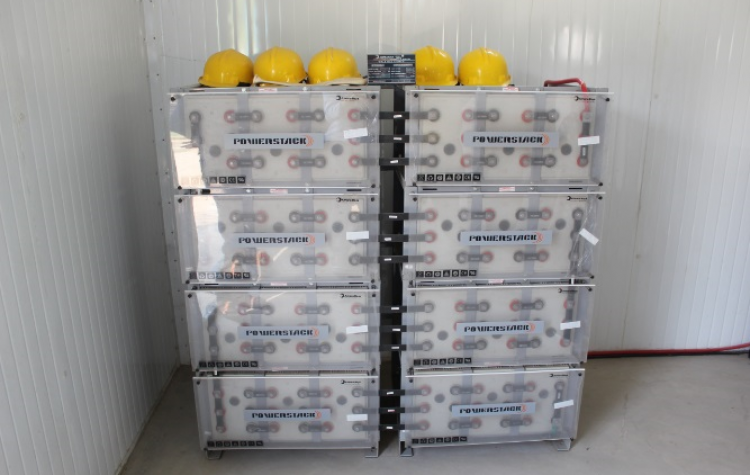
The batteries used lithium-ion, with a 2V 135h capacity and an output of 400V. A total of 24 batteries are connected in a series 42/48V, purely to provide backup services. It takes between 4 to 6 hours of sunlight for the First Solar modules to charge the battery set.
To maintain the mini-grid, the modules have to be cleaned every two days over a one-hour period since the region is very dusty. This is a simple process compared to the biomass gasification system, which requires trained technicians to carry out a different maintenance schedule every three days.
Making power affordable
Husk’s ability to be customer-centric will always stand apart from Indian Discoms (utilities) and the centralised grids, which are simply too large, but regulations do allow for these decentralised mini-grids to integrate with the main grid and Husk is already working with Discoms in Uttar Pradesh to run a pilot. It’s not one-way traffic in favour of the decentralised system either, since one of Husk’s competencies is being able to collect money from the customer, which has typically been a problematic and bottomless task for the average Indian Discom.
Husk already offers flexible tariff schemes that change depending on what time of the day the power is being used. This is measured using a sophisticated net metering platform, that can be managed from anywhere in the world. It offers discounted electricity prices between 10am and 4pm when generation from solar is at its peak. It also offers discounts to customers using 1kW or more, as this is classed as productive power that is being used for income generation by the consumer, like running a business for example.
“We promote those kinds of activities because it just generates more economic activity in the village. They are happy, their business grows, our business grows so that’s a category of customers that we can easily identify through the pre-paid meter and we can devise the perfect category of tariff for them,” says Sinha.
Husk also estimates that customers save around 20-30% on energy costs, while also benefitting from the uninterrupted round-the-clock power. There is also a service level agreement wherein if anything goes wrong with the project, Husk will fix it within four hours.
Using a pre-paid meter also means customers are not conscripted into paying for energy supply. When PV Tech visited the site, out of 110 customers, 90 had opted in for the month, while the remaining 20 had temporarily opted out, either due to being hard up on cash, or being away from home at that particular point in time. Customers have the flexibility to opt back in at anytime.

On the left in the picture above, a shopkeeper’s energy usage shows a peak during the daytime and parts of the night, whereas on the right a household charges a mobile phone briefly during the day and then has peak usage at night for lighting. Husk can tailor tariffs to meet the needs of each customer in this way.
Looking ahead, Husk will retain its focus on Uttar Pradesh and Bihar, but will also enter Jharkhand, with a goal to add between 250 and 300 new sites or power plants by 2021.
The company’s plans in Tanzania are to expand to roughly 35 new sites over the same period of time and if more capital resources are secured, it plans to go to West Africa as well.
Sujoy Ghosh says that given the small, kilowatt-scale of most of these projects, it’s easy to gloss over their significance, but if you start aggregating them all it becomes clear that this is a “huge opportunity”.
By late March 2018, India had sanctioned 4,375 decentralized distributed generation (DDG) solar energy-based projects covering 3,377 villages, of which 2,321 projects across 1,446 villages had already been commissioned.
Reflecting on the benefits of the mini-grid in Uttar Pradesh, clearly it would be prudent for India to concentrate on this third aspect of decentralised regular and reliable power just as much as on total electrification.
Today, Narendra Modi is due to be filmed talking live to the beneficiaries of his various electrification schemes, focusing on those receiving power for the first time, even though the household electrification plan still has a long way to go. One can imagine at some point in the future, Modi talking to the beneficiaries of Husk’s decentralised mini-grid at Tamkuhi Raj once the national focus naturally shifts towards quality power.
